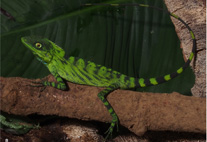Abstract
Although Notodromas monacha (O. F. Müller, 1776) was first reported from Japan over 85 years ago, detailed comparisons between Japanese and European specimens reveal that the Japanese specimens have been misidentified. The Japanese specimens are described as a new species, Notodromas trulla n. sp., herein. This species differs from Notodromas monacha by the morphology of the male fifth limbs and sexual organs, and the morphology of the female carapace. Like other Notodromas species, it is at least partially neustonic, spending considerable amounts of time hanging upside down from the water surface, facilitated by an oval concavity on its ventral surface. It is found in rice fields and small, shallow ponds with few or no floating plants and a muddy substrate, and in suitable habitats can be very abundant. However, evidence suggests that this conspicuous species has experienced a significant and widespread population decline in Japan; reported as abundant in rice fields, swamps and ponds in the 1940s–70s, this species has been collected from only a small number of localities in recent years.

